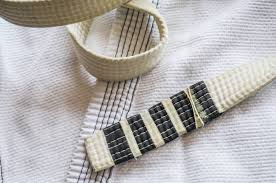In the world of Brazilian Jiu Jitsu, the belt system is often seen as the ultimate indicator of progress. From the day you step onto the mats as a white belt to the day you earn your black belt, the belts serve as markers of skill and achievement. However, if you take a step back and look at the bigger picture, it becomes clear that belt colors, while certainly important in marking milestones, don’t truly define a practitioners journey or the essence of what BJJ is all about. Here’s why.
Belt Colors Don’t Define Your Skill Level
It’s easy to assume that someone with a higher belt color knows everything about BJJ, or at least more than someone with a lower belt. While a black belt is a prestigious achievement and represents a deep level of expertise, the color of your belt doesn’t always correlate to how well you perform on the mats.
In fact, many seasoned practitioners will tell you that the belt is just a laundry list of mistakes they’ve made over the years. What truly matters is not the belt, but how well you understand the intricacies of the sport, how you apply techniques in sparring, and how you continuously improve. You could be a purple belt with exceptional fundamentals, or a black belt who is still refining certain techniques.
Everyone’s Journey is Different
BJJ is a lifelong journey of learning, not a race. Everyone progresses at their own pace, and that’s one of the beautiful things about the sport. The path to black belt can take anywhere from 8-15 years, depending on the individual. Some may be more naturally gifted, others may take longer to absorb the concepts. And that’s okay!
In the grand scheme of things, your journey isn’t defined by how quickly you reach the next belt, but by how much you improve, how much you learn, and how much you contribute to the community along the way. Your focus should be on your personal growth and mastering techniques, not on the color of your belt.
The Belt is Just a Tool for Measurement, Not a Final Goal
Belts in BJJ are a useful tool for instructors to track a student’s progression and to help students set goals for themselves. However, they should never be the end-all-be-all of your training. The true purpose of training in BJJ is not just to collect belts but to grow as a martial artist and a person.
While earning a belt can feel like a significant achievement, it’s important to remember that the real rewards in BJJ come from things that are far more important than a belt: the skills you gain, the lessons you learn from overcoming challenges, and the relationships you build with fellow practitioners. A belt is simply a tangible reminder of that journey, but it’s not the destination.
The Risk of Belt Chasing
A common pitfall many practitioners face is belt chasing: the desire to get promoted as quickly as possible. This can lead to a lack of focus on the most important aspects of training, like improving technique, refining details, or working on physical conditioning. When you focus too much on the belt, you risk neglecting the true essence of BJJ, which is about continuous improvement and deepening your understanding of the art.
Belt chasing can also lead to frustration when progress isn’t happening as quickly as anticipated. Remember: BJJ is a marathon, not a sprint. If you rush through it, you might miss out on the invaluable lessons that come from the struggle and the plateaus. Embrace the journey and focus on getting better, and the belts will follow naturally.
Your Training Partners’ Progress Matters More Than Your Belt
In BJJ, you’re not training alone, you’re part of a community. The progress of your training partners is just as important as your own. As a white belt, you’ll learn from rolling with higher belts. As you move up through the ranks, you’ll have the opportunity to mentor others and pass on the knowledge you’ve accumulated. This shared experience of learning and growth is what truly makes BJJ special.
In the grand scheme of things, your value as a practitioner isn’t measured by your belt color but by how you contribute to the gym‘s culture and the growth of those around you. You might be a blue belt who helps a white belt improve their guard, or a purple belt who constantly refines their top game—those contributions are what matter.
Focusing on What Really Matters
If you strip away the belts and the rankings, the true beauty of BJJ lies in the art itself. It’s about the mental and physical challenges, the problem-solving, the resilience, and the ability to adapt in a constantly evolving sport. The lessons learned on the mats, ”perseverance, humility, patience,” are far more valuable than any colored belt.
As a practitioner, it’s easy to get caught up in the belt system. But remember, the journey is about improving yourself, not impressing others with your rank. It’s about becoming a better version of yourself on and off the mats, regardless of whether you’re a white belt or a black belt.
In conclusion, belts in Jiu Jitsu serve as a way to mark milestones, but they should never be the thing that defines you as a practitioner. What matters more is your commitment to the art, your willingness to learn and adapt, and your ability to help those around you grow. The color of your belt doesn’t determine your worth in jiu jitsu: your effort, humility, and love for the art do.
So, whether you’re a white belt or a black belt, keep training, keep learning, and keep enjoying the process. The belt will come in due time, but the journey is what truly defines you as a jiu jitsu practitioner.

Leave a Reply